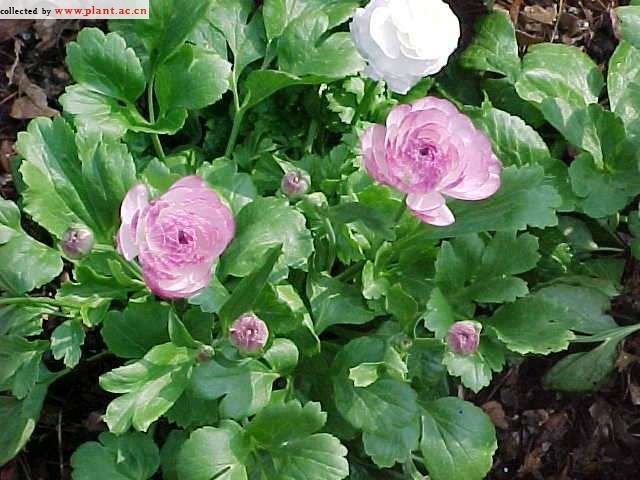Ranunculus asiaticusPersian buttercup
科:毛茛科
Family:Ranunculaceae
属:毛莨属
common name:Persian buttercup
introduce:Plant Type: Bulb
Family: Ranunculaceae
Missouri Native: No
Native Range: Southeast Europe and southeast Asia
Height: 1 to 2 feet
Spread: 1 to 2 feet
Bloom Time: May - June
Bloom Color: Red, pink, purple, yellow or white
Sun: Full sun (only)
Water: Medium moisture
Maintenance: Medium
General Culture:
Grow in medium wet, well-drained soils in full sun. Needs excellent drainage. Performs poorly in unamended heavy clays typical of the St. Louis area. Where not winter hardy (north of USDA Zone 8), plant tubers 2?deep and 6-8?apart, with root claws down, in spring several weeks before the last frost date. Performs best in cool spring weather. In St. Louis, tubers may be best started indoors for transplanting outside in mid to late April so that most flowering will occur before the onset of extended 90 degree + temperatures. Deadhead spent flowers to encourage additional bloom. Plants go dormant by summer. After bloom and foliage yellows, dig tubers, cut off tops, dry and store covered in a dry medium in a cool location until the following spring. Tuberous roots are not easy to store successfully, and, since they are relatively inexpensive to purchase, it is an option to simply grow these plants as annuals. They may also be grown in containers, but successful storage of roots during the dormancy period is still somewhat difficult.
Noteworthy Characteristics:
Persian buttercup is a tuberous-rooted plant that blooms in late spring to early summer in the St. Louis area. It features cup-shaped, poppy-like flowers (to 2?diameter) in red, pink, purple, yellow and white with distinctive purple-black anthers on stems typically growing 12-24?tall. Finely-cut, parsley-like leaves form a foliage mound to 12?tall. Hybrids such as the popular Tecolote strain produce fully double, peony-like flowers (to 4?diameter) in a broader range of colors which also includes pastels and bicolored blooms.
Problems:
Can be difficult to grow well in St. Louis because periods of high summer-like temperatures often occur in May and June and the tuberous roots are somewhat difficult to store successfully over winter. Root rot often occurs in wet, poorly drained soils.
Uses:
Beds, borders, containers.
